in 1972, oswald mathias ungers and his students at cornell university in ithaca, ny, developed a prototype for a self-help housing system (s-hhs). shortly before, ungers and his wife liselotte started a research project on utopian communities in the usa; the study was published in 1972 under the title “communes in the new world 1740–1972”. this coincidence inspired our third summer school, which was held in july 2021 with students from the ku leuven, faculty of architecture, and the kunstakademie düsseldorf.
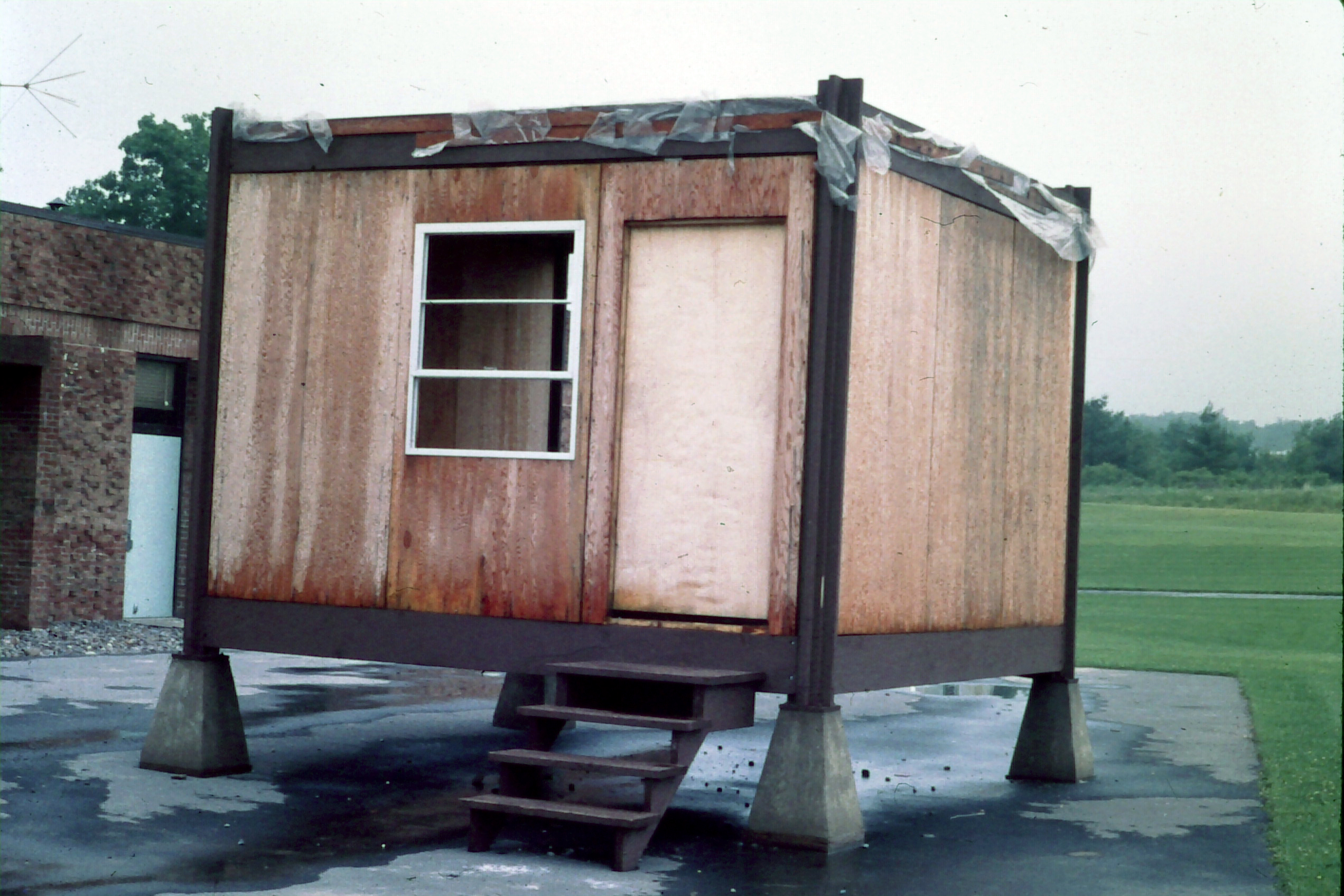
self-help housing system prototype (oswald mathias ungers with gerardo brown-manrique and others, ithaka 1972)
ungers—at the level of research and architectural practice—was dedicated to the search for alternatives to the planning approaches of the 1950s and 1960s, which had been used to realize countless large-scale and uniformly designed housing projects. the self-help housing system extended this search and addressed a need for a radical restructuring of the construction industry due to the enormous growth pressures in us cities. the project conception was also motivated by the social upheaval of the late 1960’s and early 1970’s in the us triggered by the vietnam war and civil right movements.
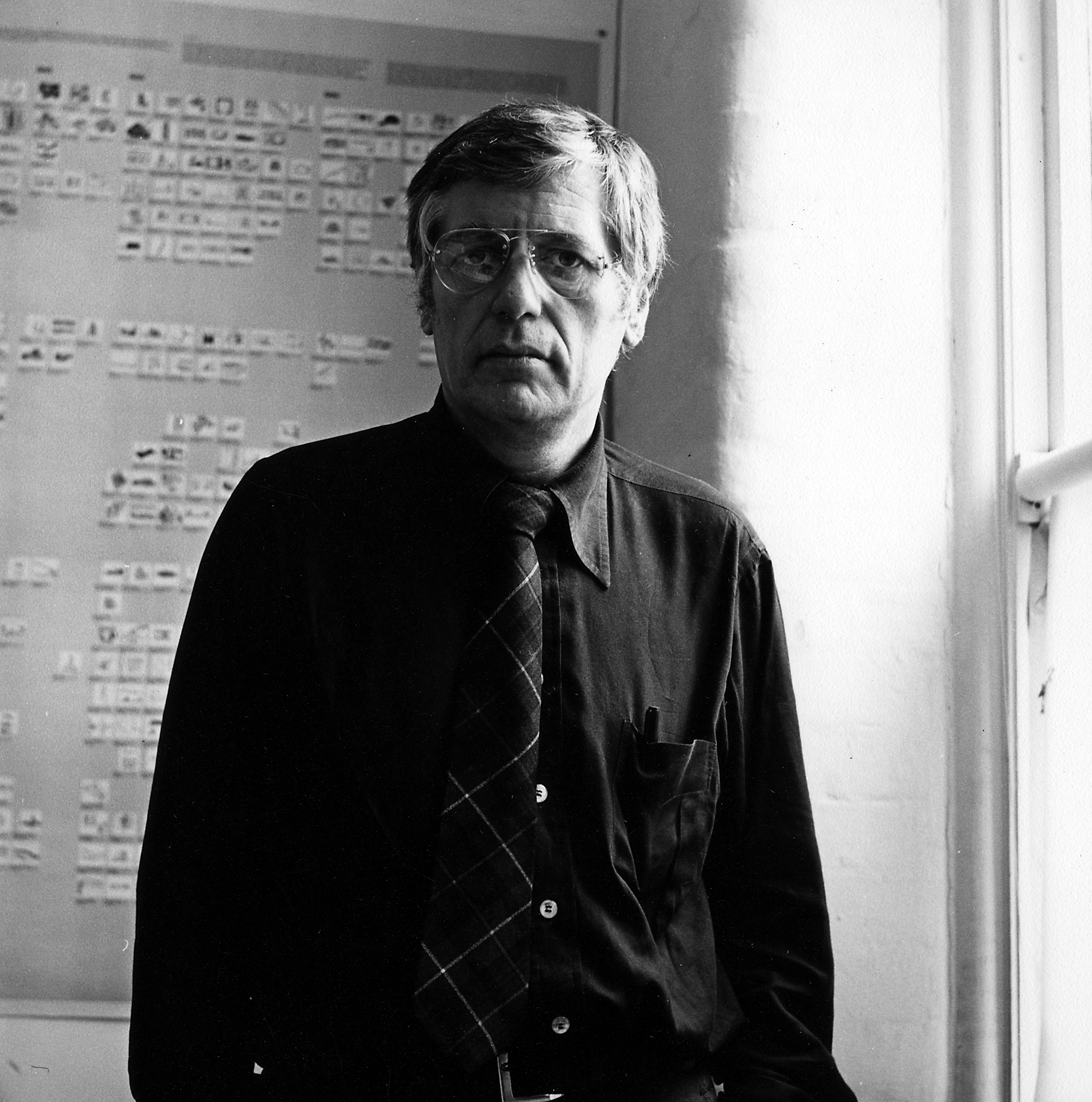
oswald mathias ungers
the historical and contemporary communities liselotte and oswald mathias ungers studied were concerned with individuality and communal living in groups defined by common interests. on the one hand, the communes adopted the demands of social movements in the 1970s, looking for ecological ways of living, striving for equality and rejecting consumerism. on the other hand, individual aims and moral beliefs were taken as a point of departure. what was of specific interest was how these were expressed in forms of living and translated to an architectural idiom.
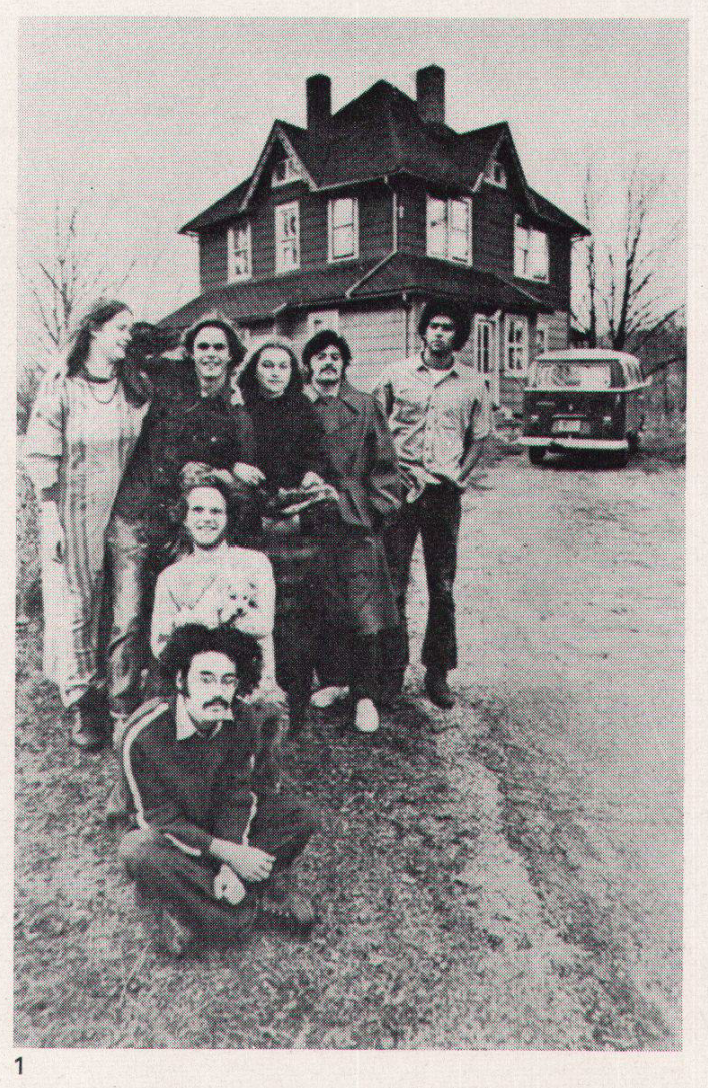
commune in yale, c. 1972 (collected by the ungers for their research on communes)
the general conditions in the 1970s, under which ungers developed both s-hhs and the research into communes, show clear parallels to the challenges of today. once again, cities are faced with a lack of affordable housing. as a result, people tend to explore different ways of living together and to retreat into alternative communities.
one has to ask whether this tendency has reinforced a segmentation of social and urban space. do today’s communities, shaped by digital culture, necessarily entail a turning away from society as a space for political negotiation and a retreat into the echo chambers of private beliefs? and how can engaging with defining one’s own living environment affect society?
the aim of the summer school was to prepare an exhibition on “the construction of communities”. students developed installations and forms of representation that analyze ungers’ approach to self-build and the associated construction of communities in light of current debates.
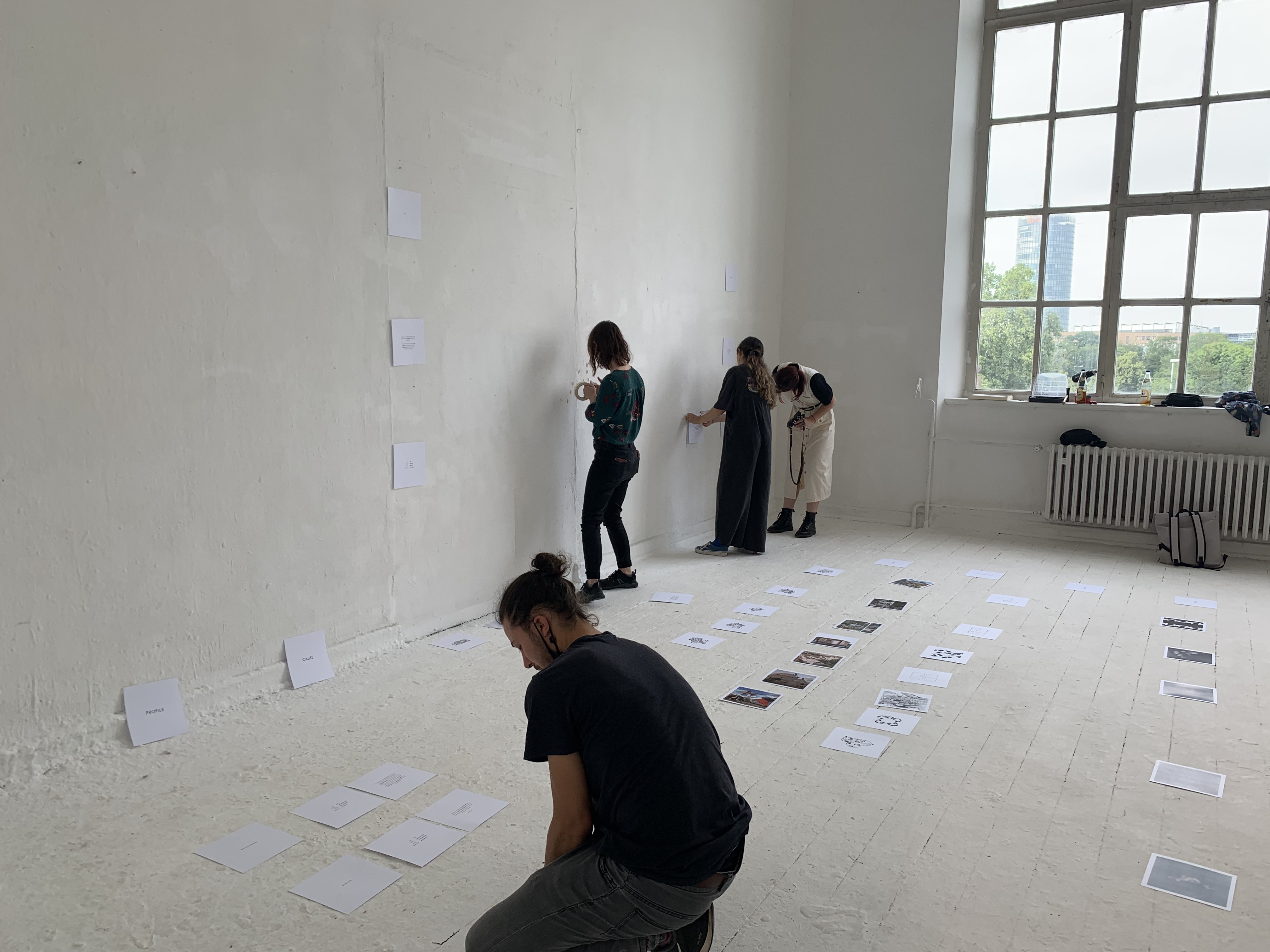
setting up a matrix of self-build projects
the summer school took place from july 12–16, 2021 at the kunstakademie düsseldorf
- students:
- EKIN BAŞKENTLI
- MARTHA DELAGRANGE
- ISSA DRIESEN
- GJILTINË ISUFI
- ALJOSCHA LAHNER
- MARIA LORITI
- FIACHRA MCCARTHY,
- DARIA NAZARENKO,
- VINCENT NUYTS
- LAURA RENARD
- FABIAN SINGLER
- KONSTANTIN TRAUTMANN
- DAAN VANBRABANT
- TOM VANDORMAEL
- teaching and coordination:
- cornelia escher (kunstakademie düsseldorf)
- lars fischer (ku leuven)
- anja sieber-albers (uaa)
an exhibition including further developed projects was shown at ENSASE from 28.02.23–07.04.23
- students:
- GJILTINË ISUFI
- ALJOSCHA JAHNER
- FIACHRA MCCARTHY
- RUDOLF SCHINGERLIN
- ALJOSCHA LAHNER
- students s7/s8 ensase
- organization and curation:
- cornelia escher (kunstakademie düsseldorf)
- lars fischer (ku leuven)
- with support from:
- ku leuven, faculty of architecture
- kunstakademie düsseldorf
- ungers archiv für architekturwissenschaft
- ofaj/dfjw
- website development:
- anna feng
- ku leuven, faculty of architecture
- kunstakademie düsseldorf
- ungers archiv für architekturwissenschaft
calendar / blog
saturday july 10, 2021
siedlung kalscheuer weg, cologne
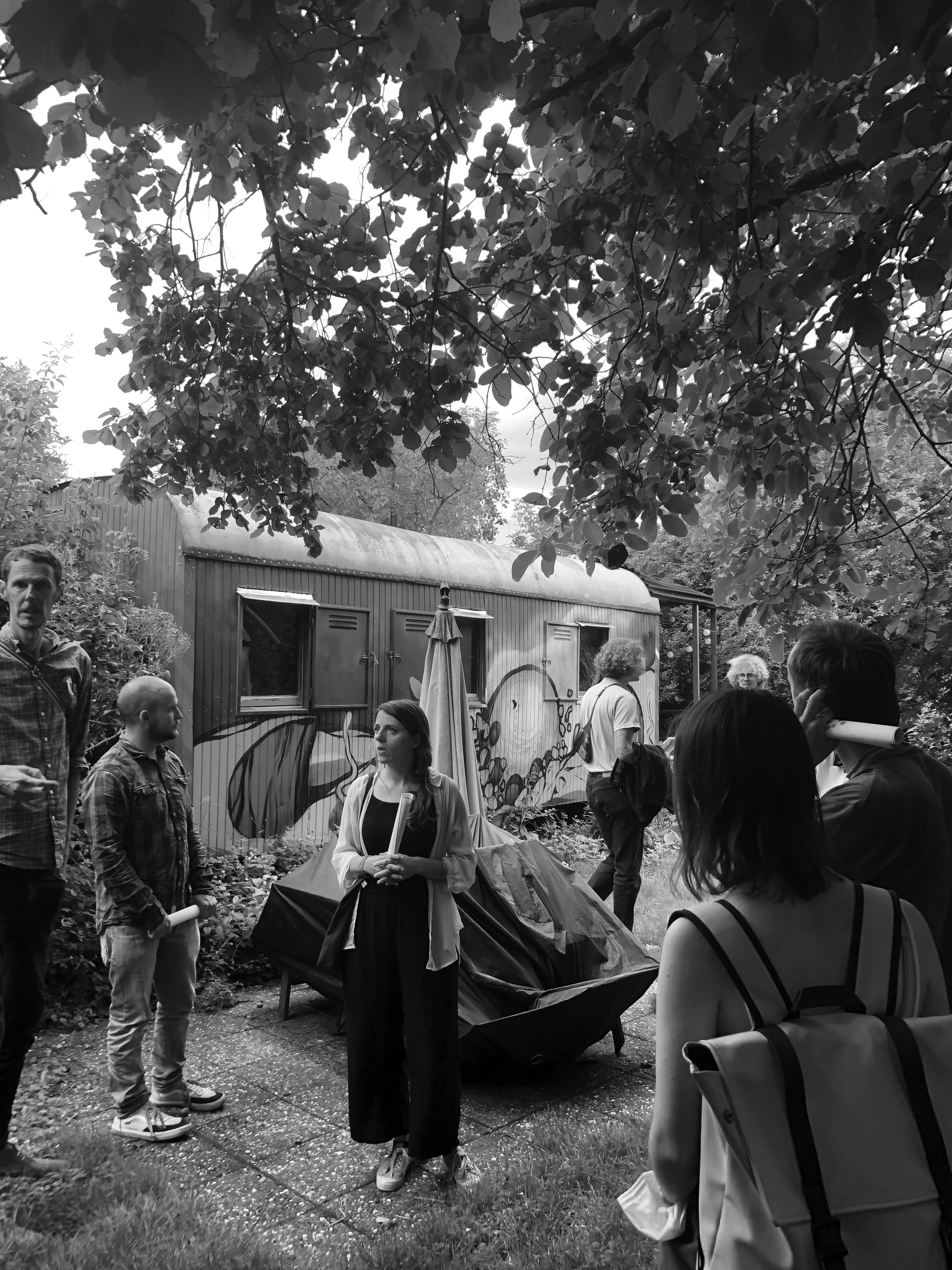
visiting the siedlung kalscheurer weg
monday july 12, 2021
introduction: architecture/community and self-build
text: de-totalized forms of encounter. interview with joseph vogl, in: an architektur 10 (2003)
talk: GERARDO BROWN-MANRIQUE (miami university, department of architecture) the societal context of ungers’ self-help housing system (s-hhs)
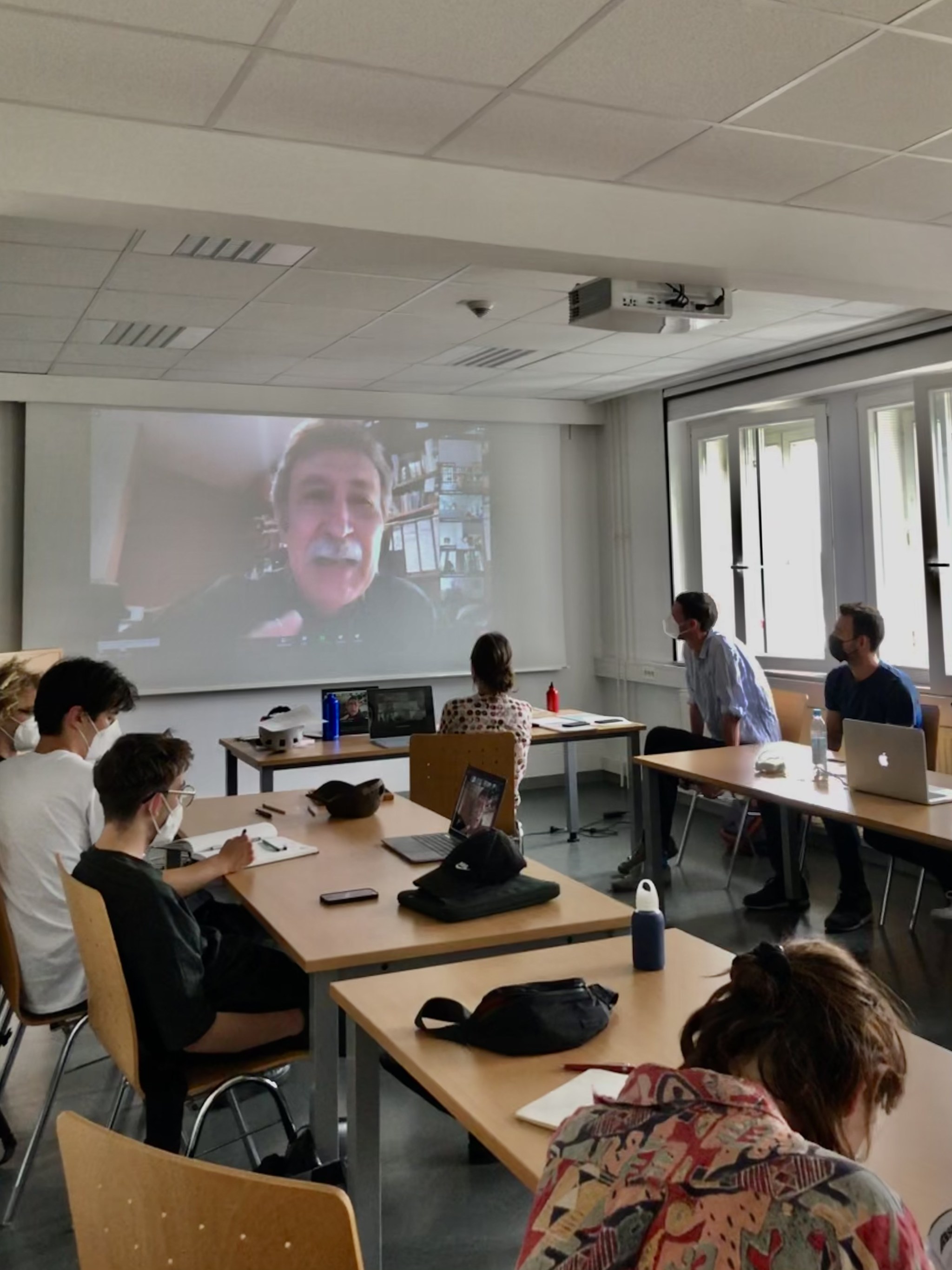
listening to gerardo brown-manrique
talk: ANNE-JULCHEN BERNHARDT (rwth aachen) self-build
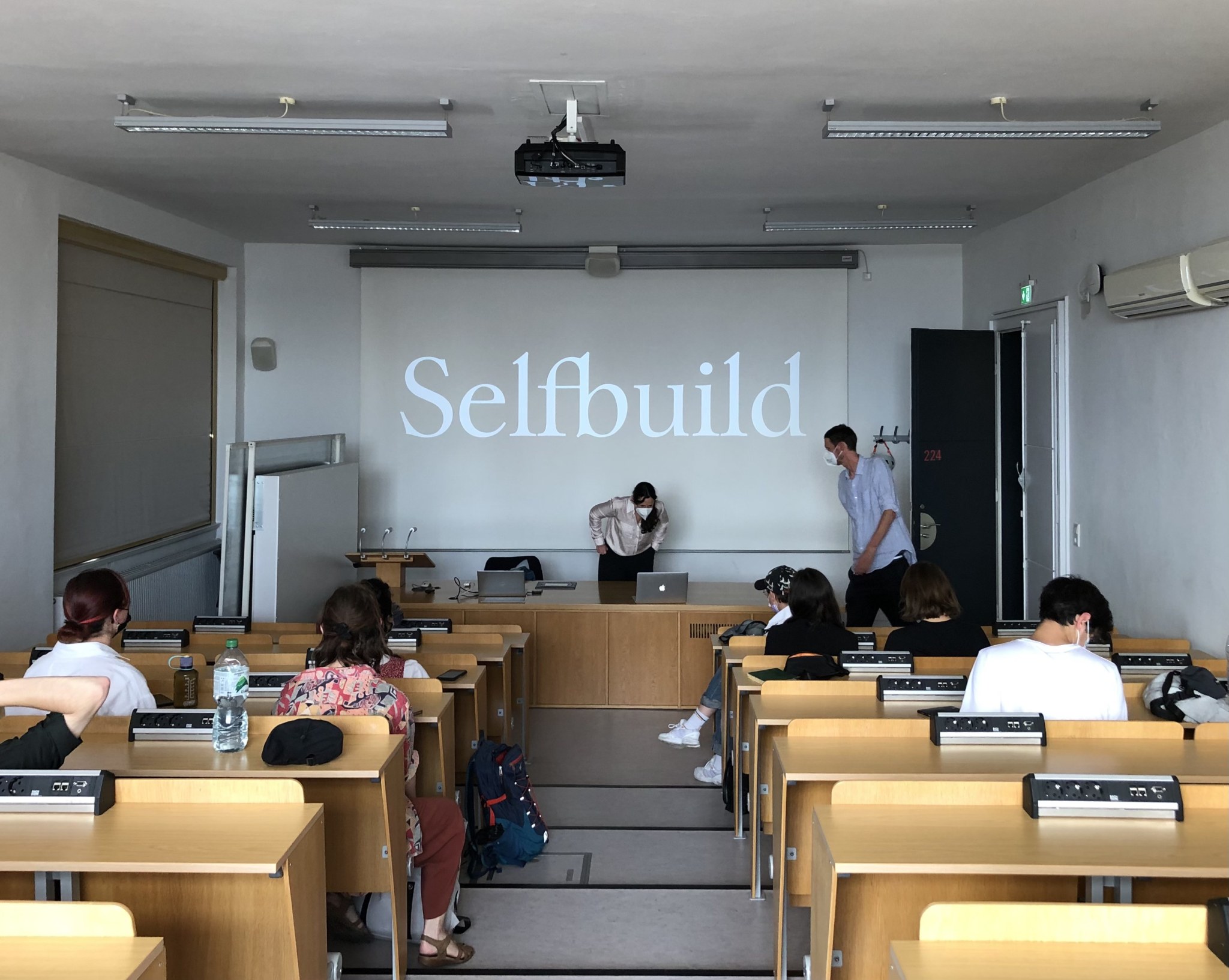
preparing for a talk on self-build by anne-julchen bernhardt
tuesday july 13, 2021
tour: house belvederestrasse 60 (oswald mathias ungers, cologne, 1958)
research, ungers archive: how does self-help housing fit into ungers’ work?
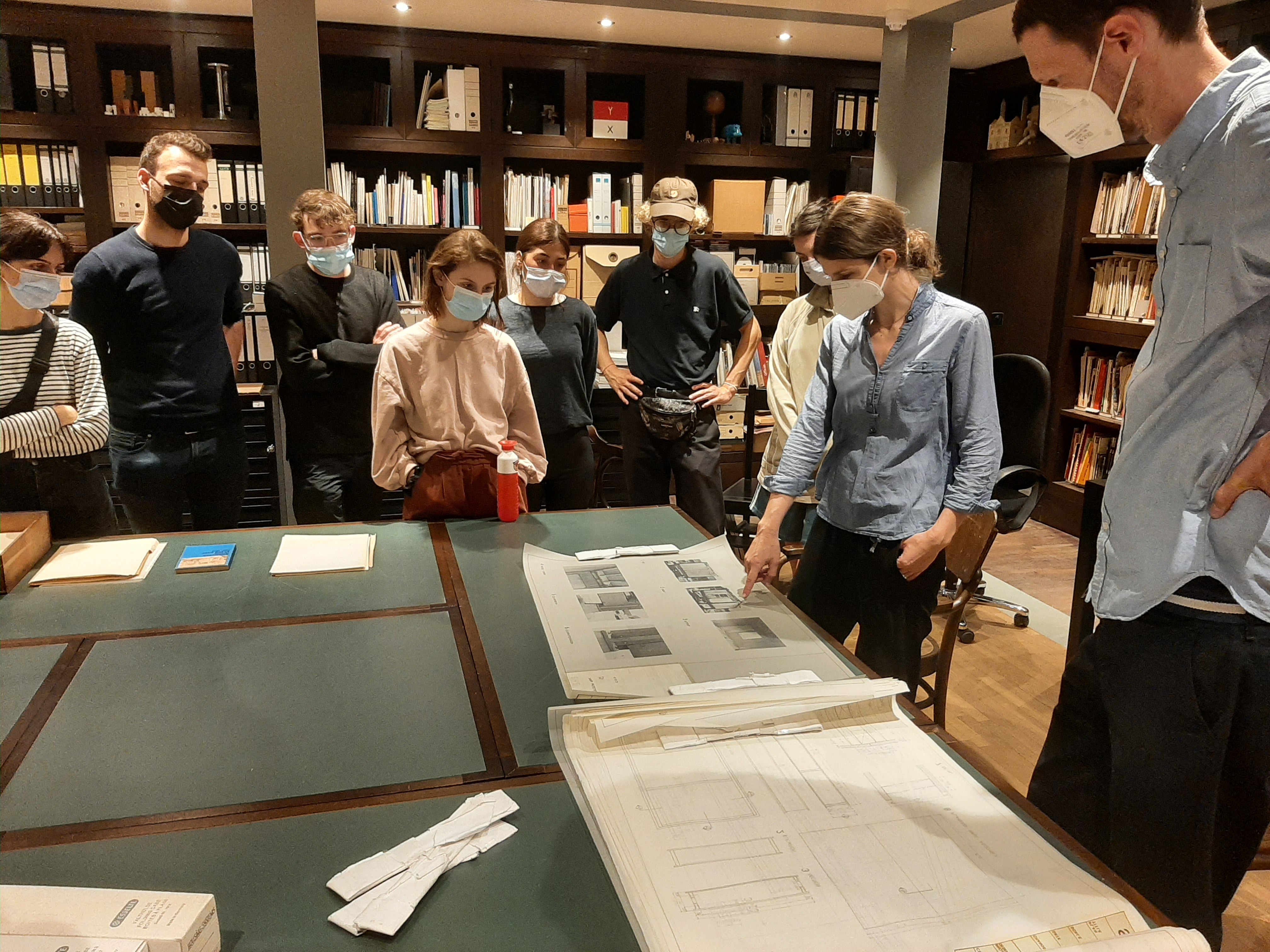
examining the orginal s-hhs drawings
tour: wallraf-richartz-museum (oswald mathias ungers, cologne, 2001)
wednesday july 14, 2021
talk: OLIVER ELSER (dam) alternative self-build architectures
task: defining the relationship between community formation and self-build architecture
thursday july 15, 2021
discussion: displaying architecture: conceptual development and design intentions in architectural exhibitions
task: finalize concepts
group presentation: concept and display strategies with THOMAS KRÖGER
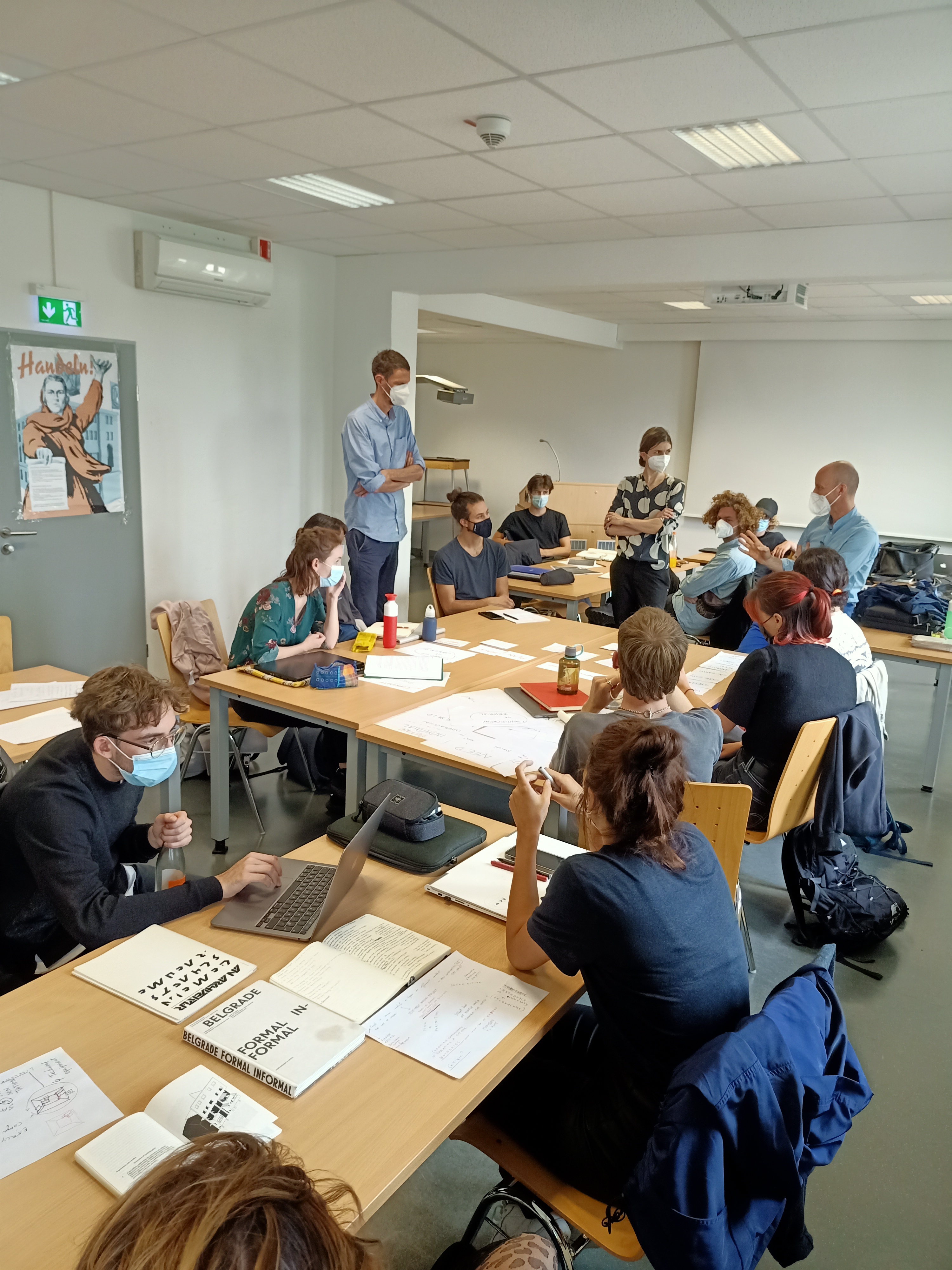
reviewing first ideas with thomas kröger
friday july 16, 2021
production
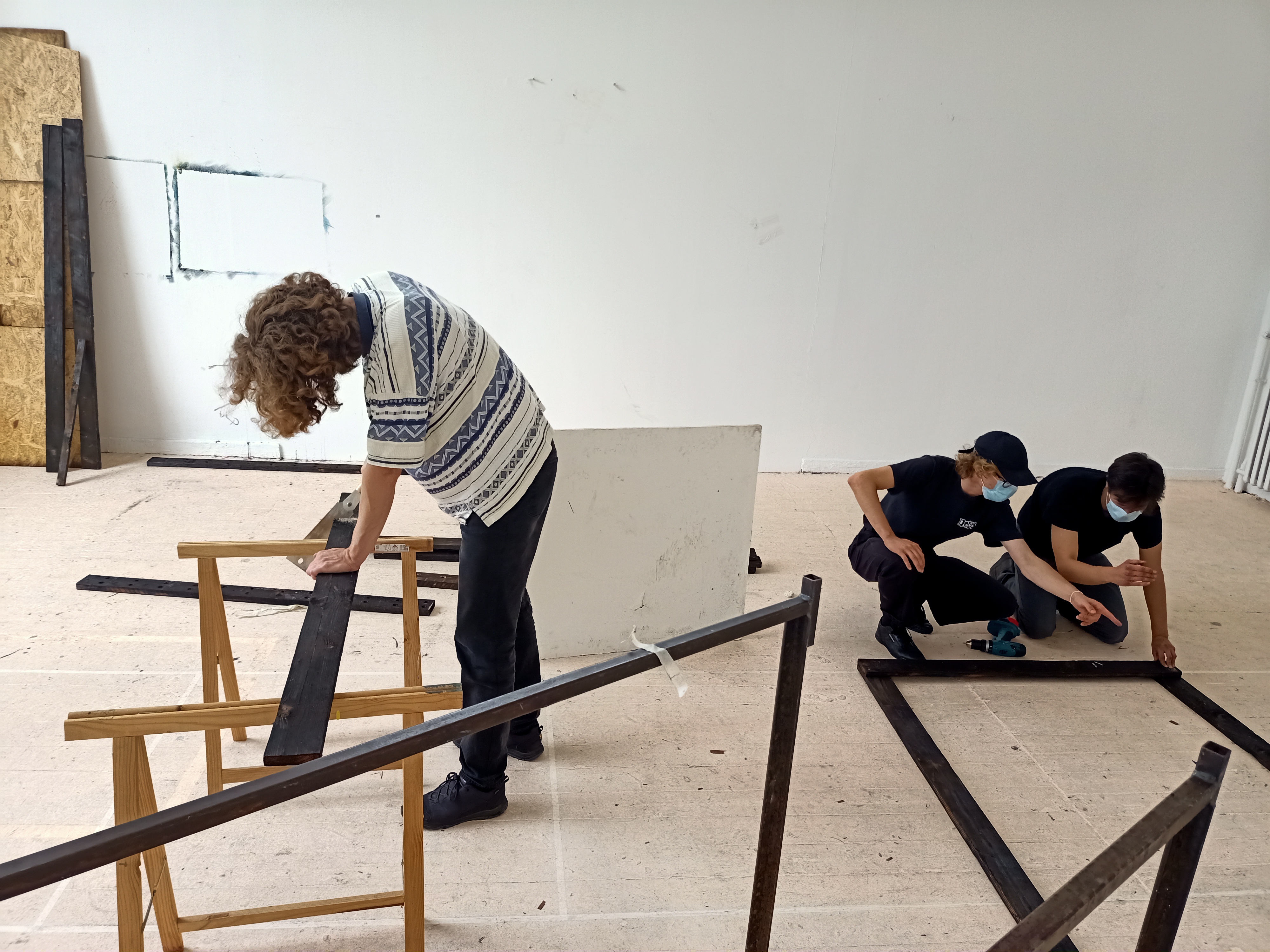
building elements of the s-hhs protoype
setup
- students:
- ANJA SIEBER-ALBERS (uaa)
- GERARDO BROWN-MANRIQUE (miami university, department of architecture)
- CHRISTOPH SCHMIDT (peter behrens school of arts)
the self-help housing system (S-HHS)
In 1969, oswald mathias ungers moved from his job at the technical university of berlin to cornell university. student protests had impacted heavily on his teaching in berlin and his project for the märkisches viertel, a large-scale housing development at the outskirts of berlin, had been hit by harsh criticism of mass housing in the media. in the us, ungers continued his research on building systems for housing. however, he entered a process of reflection and reassessment.1 It is in this context that the design for the self-help housing system took shape. as a studio project, it was also decisively influenced by a climate of social change in light of the civil rights movement and student protests, which called for a restructuring of architectural education and production.
a previous studio project at cornell had realized an initial exploration of modular housing types made from timber elements.
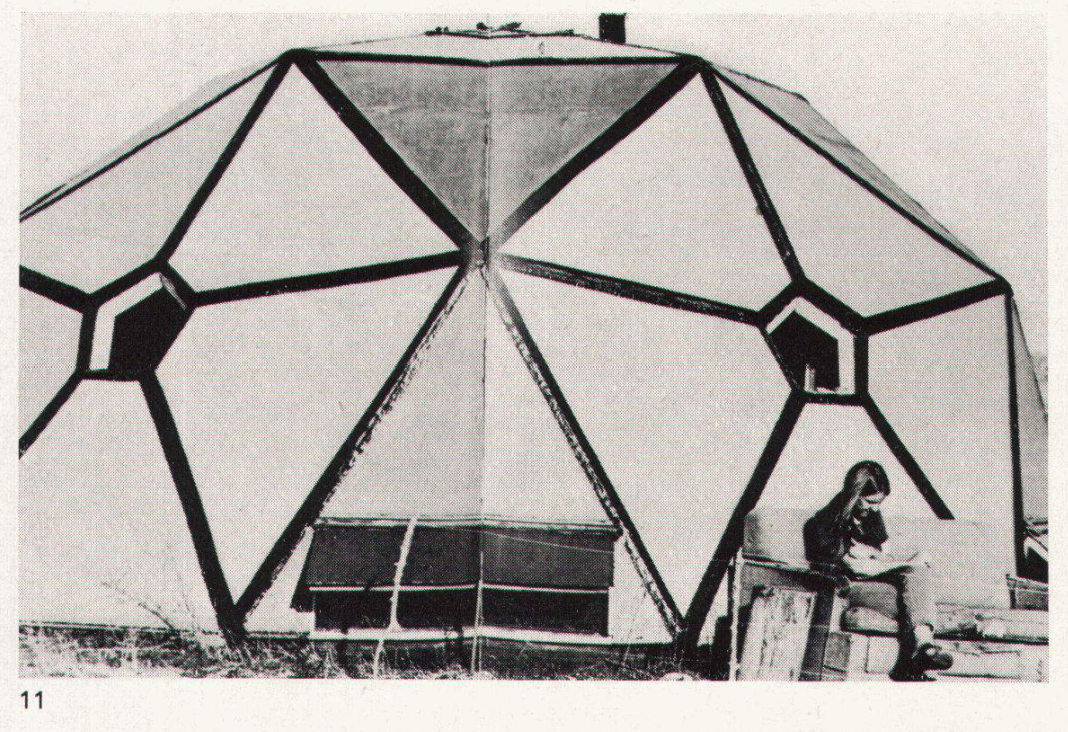
dome in drop city (south colorado) (collected by the ungers for their research on communes)
with this project, ungers participated in a competition held as part of the “operation breakthrough” program, a government initiative to improve prefabricated building construction on a large scale, in 1969. however, ungers’ proposal was unsuccessful and was not developed any further in this context.
the s-hhs was built on the general layout of the previous project, but placed a stronger focus on bottom-up processes and organizational contexts. it was to provide modest housing notably for people on a low income or living in economically disadvantaged rural areas. the houses (or housing units) were designed to be built by the prospective users themselves from prefabricated wooden elements made with standard timber. the construction process required a minimum of tools, and followed the principle of a “growing house”. the building components were modular and could be arranged into different layouts.
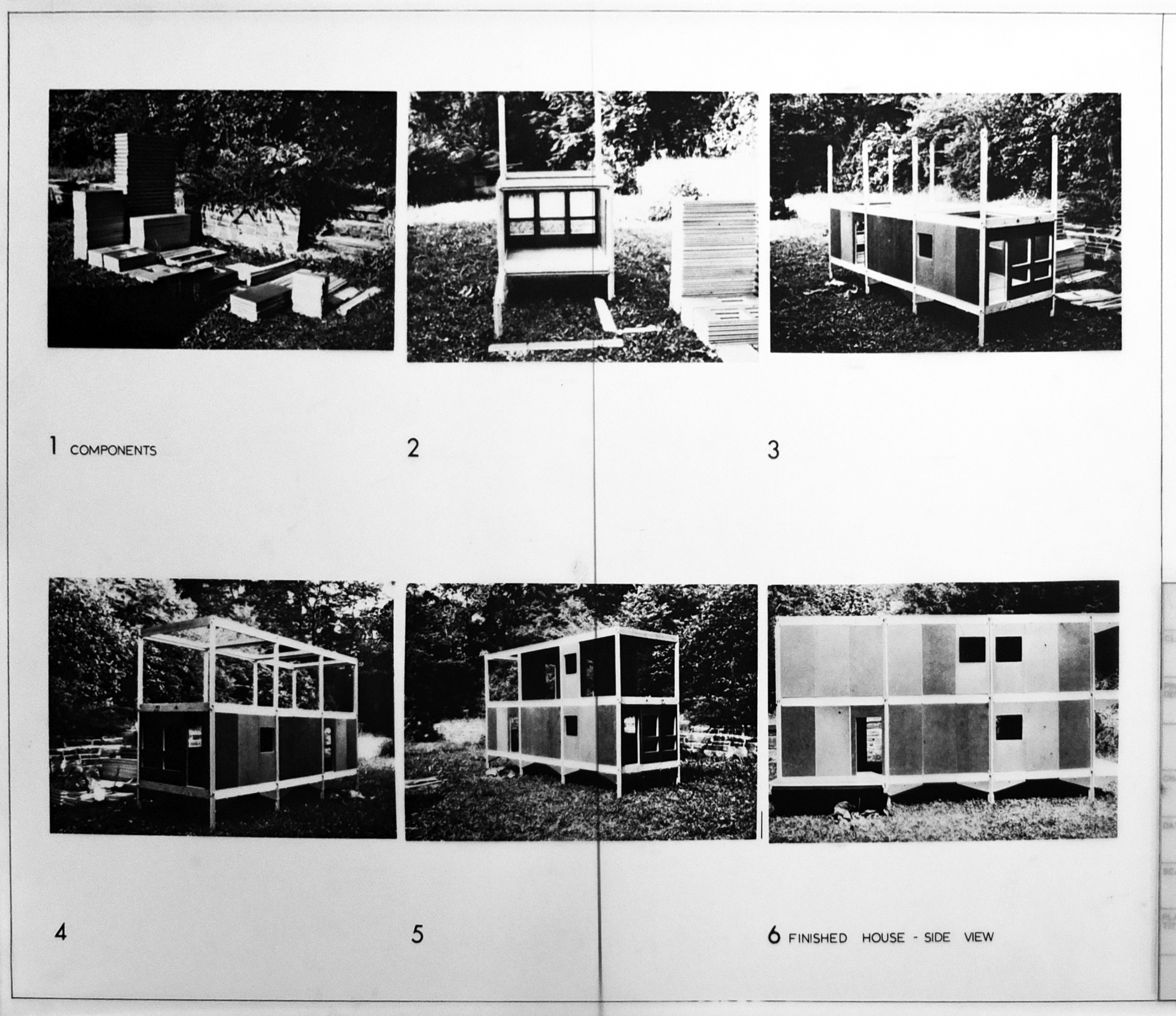
modular housing prototype (half scale) (oswald mathias ungers with gerardo brown-manrique and others, ithaka 1972)
the project took its meaning from the processes it was designed to initiate: members of afro-american communities were supposed to be involved in the manufacturing of the building components. this was part of a larger educational program which was to help break the predominance of white people in the trade unions.2 moreover, the production process was to be placed under the auspices of the later inhabitants. at the university and beyond, the s-hhs was embedded in a network of initiatives aimed at creating social change. as a consequence of its very specific production and construction contexts, the design was not realized as a conventional set of plans. instead, it appeared in the form of a booklet with a building instruction manual.
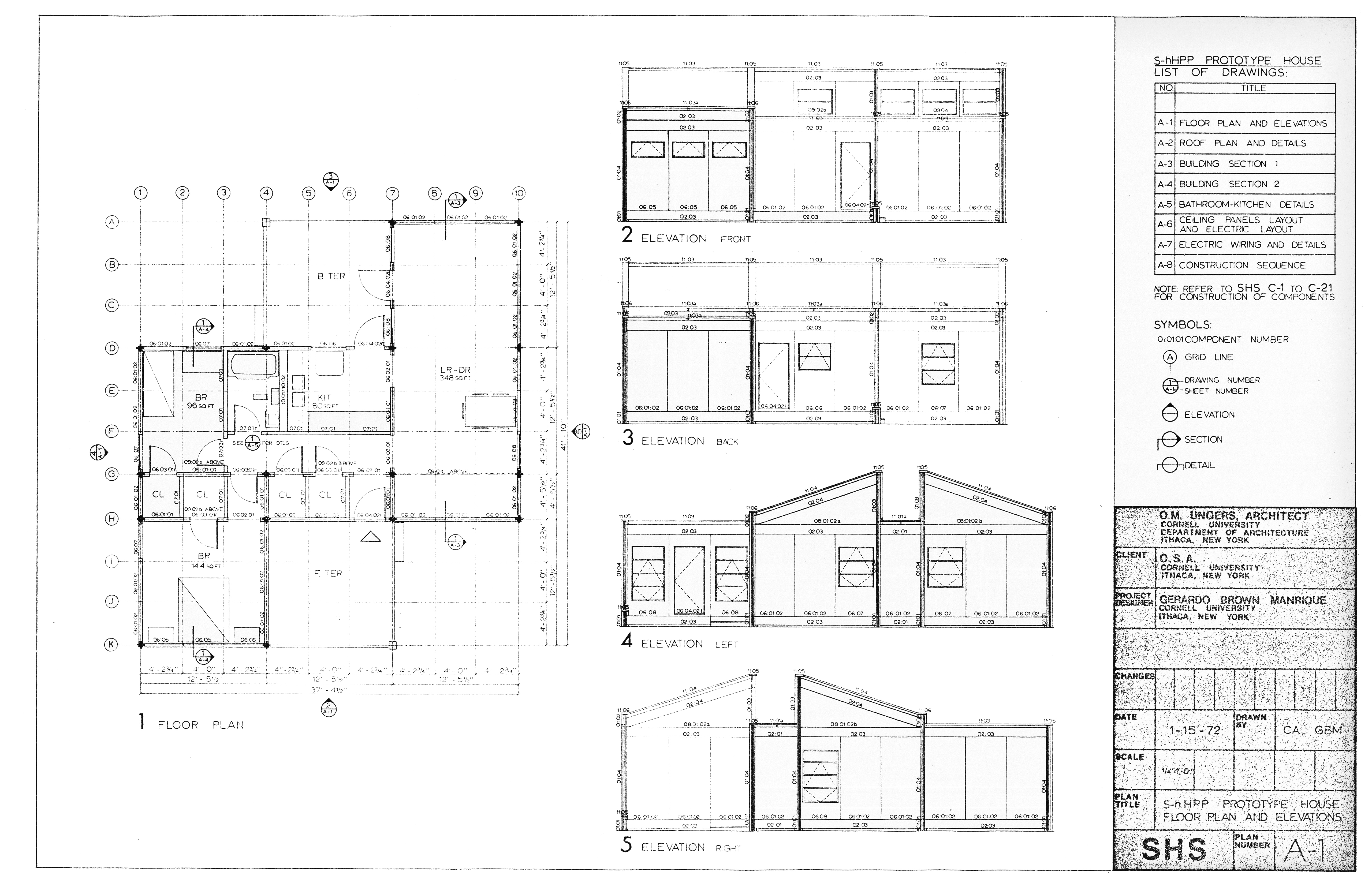
s-hhs prototype floor plans and elevations (oswald mathias ungers with gerardo brown-manrique and others, ithaka 1972)
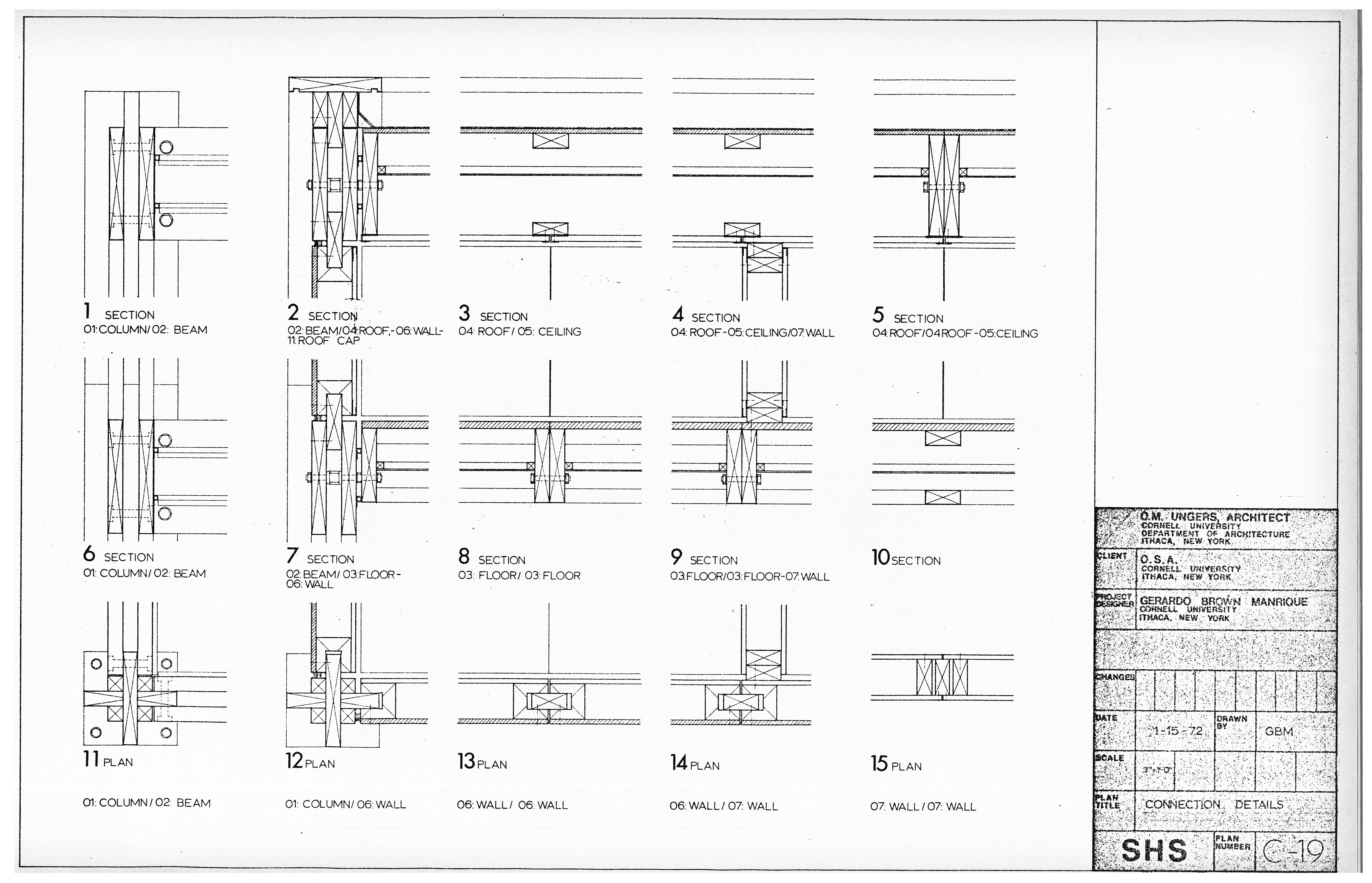
s-hhs prototype connection details (oswald mathias ungers with gerardo brown-manrique and others, ithaka 1972)
just prior to the project at cornell, oswald mathias and his wife liselotte ungers travelled across the united states studying utopian communities in the usa. their research was published in 1972 under the title “communes in the new world 1740–1972”.3 ungers’ interest in this project may have been to study spatial layouts and establish a typology of communal settlements. similar to the s-hhs, the communes were social units which had grown out of group initiatives of shared interests or moral systems instead of being planned by architects, planners and public authorities as an abstract system for anonymous users. the question was how the built forms of the communes mirrored the shared aspect of community and thus differed from a top-down planning approach.
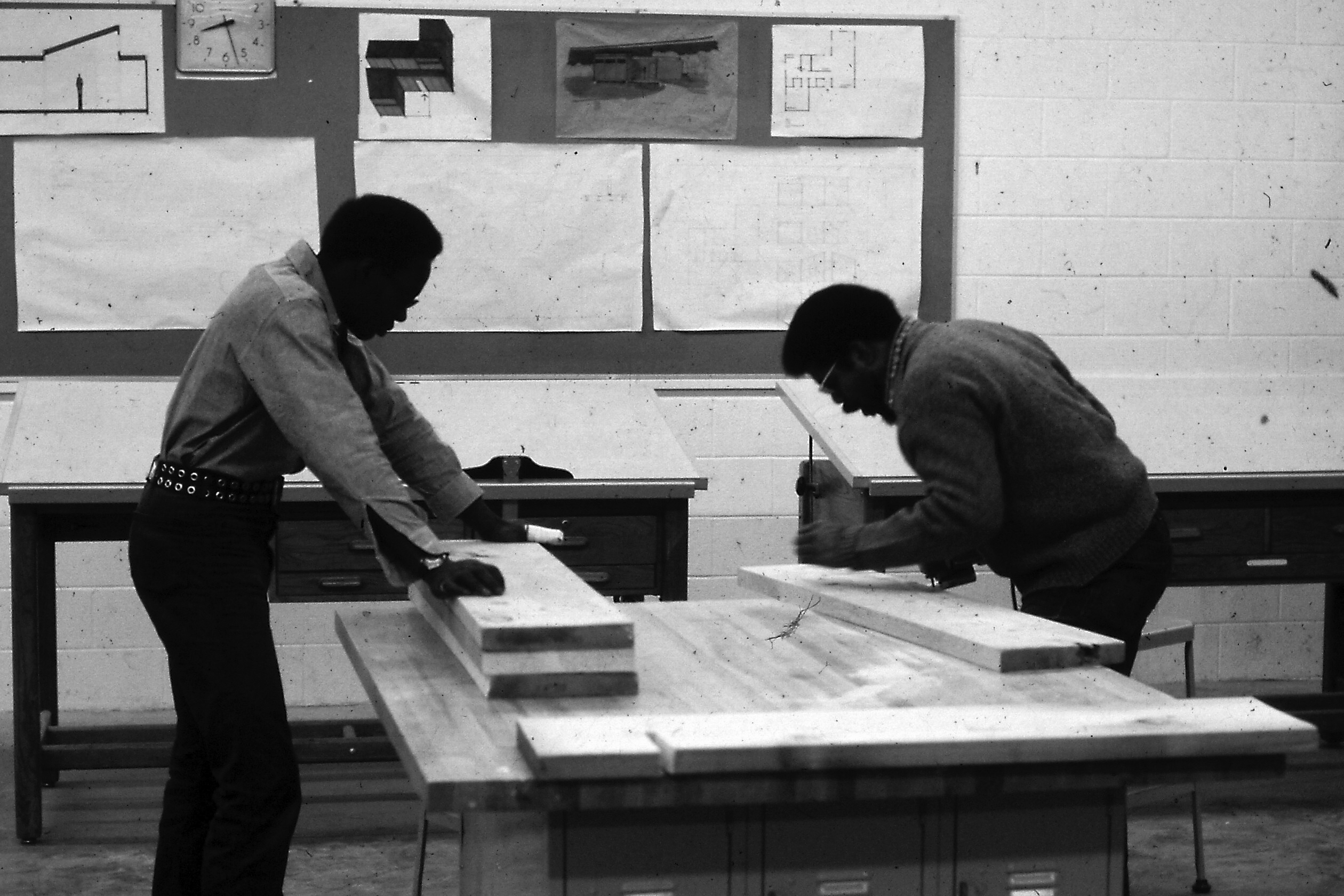
production of s-hhs components in trade school wood shop (courtesy of gerardo brown-manrique)
the self-help housing system can be interpreted as a tool to reorganize the social based on the ideal of self-help and community action. It departed from the bottom-up approach and incorporated organizational questions into architecture and architectural education. treating architecture as a device for education, self-help and empowerment, the project promised to give agency to socially or racially disempowered parts of the population.
footnotes
1. see andré bideau, “housing as discursive void: oswald mathias ungers in the 1960s and 1970s”, in: Candide. Journal for Architectural Knowledge No. 07 (Oct. 2013), pp. 61–88. Jasper Cepl, Oswald Mathias Ungers: Eine intellektuelle Biographie (Cologne: Walther König, 2007), pp. 243–280.
2. we owe this insight to Gerardo Brown-Manrique, who participated in the project as a student at Cornell university and figured as the project designer.
3. Liselotte and Oswald Mathias Ungers, Kommunen in der Neuen Welt 1740–1972 (Cologne: Kiepenheuer & Witsch, 1972).
exhibition
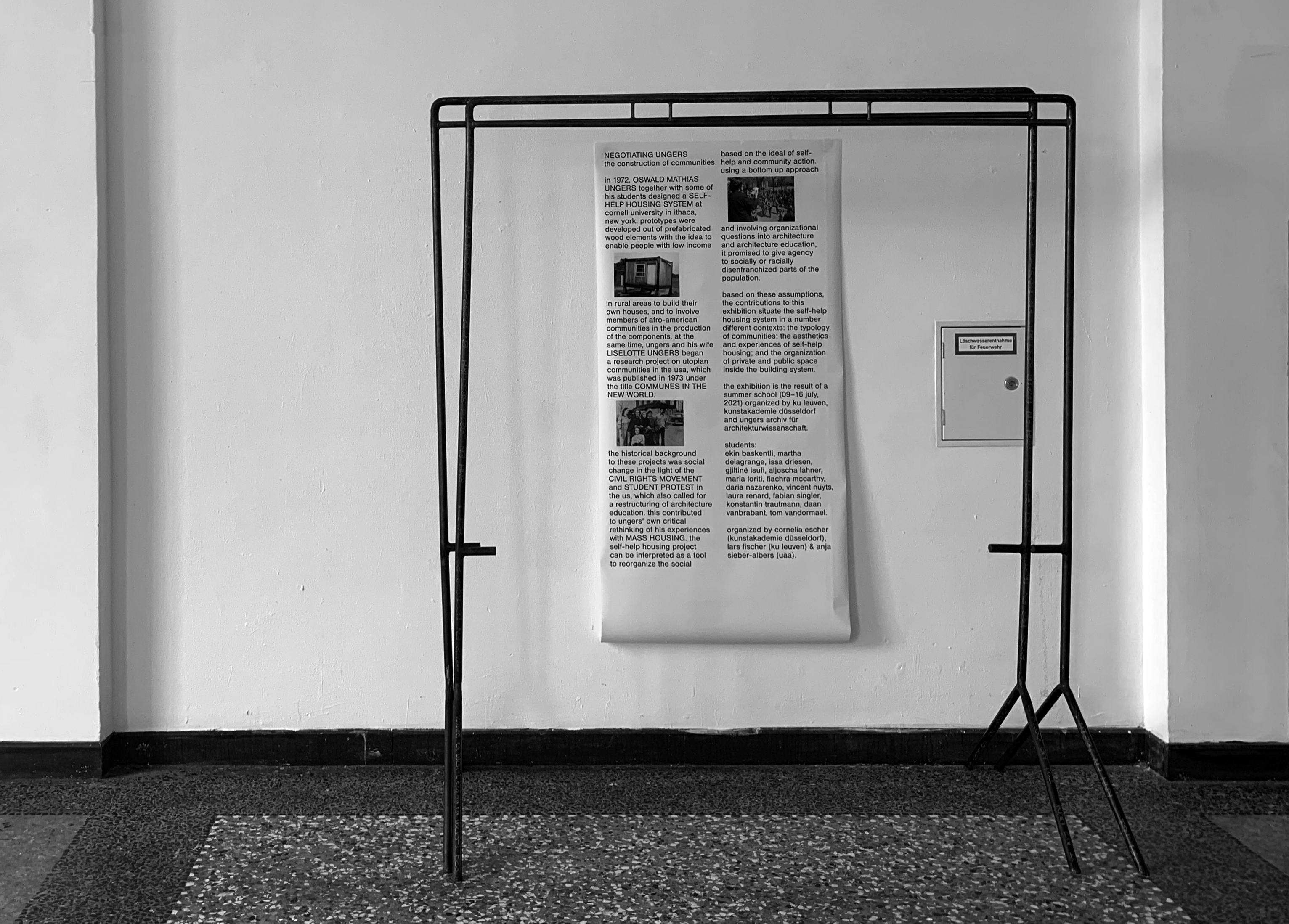
introduction to the final presentation
the summer school studied oswald mathias ungers’ project for a self-help housing system (s-hhs) along with liselotte and oswald mathias ungers’ research on communes in the united states. while the former was more architectural and departed from the assumptions of social housing and modular construction typologies, the latter was more interested in communal life and forms of togetherness. our discussions in the summer school focused on how these two concurrent projects could be brought into a dialog. we analyzed texts and drawings, visited and discussed other self-build and community projects, and explored the historical and theoretical contexts. finally, we searched for suitable media in order to present our ideas and negotiate ungers’ design in light of contemporary issues.

reviewing the results of the summer school
three different positions took shape during the discussions:
how do the fluid and multiple identities of digital societies interact with ungers’ prototype?
ekin başkentli, issa driesen, daria nazarenko and fabian singler looked at how the technology of self-help and self-build structures can still produce the spaces new communal and individual identities need. to address these issues, films showing the production of individuality and formations of communal life were projected onto an axonometric line drawing of ungers’ self-build prototype.
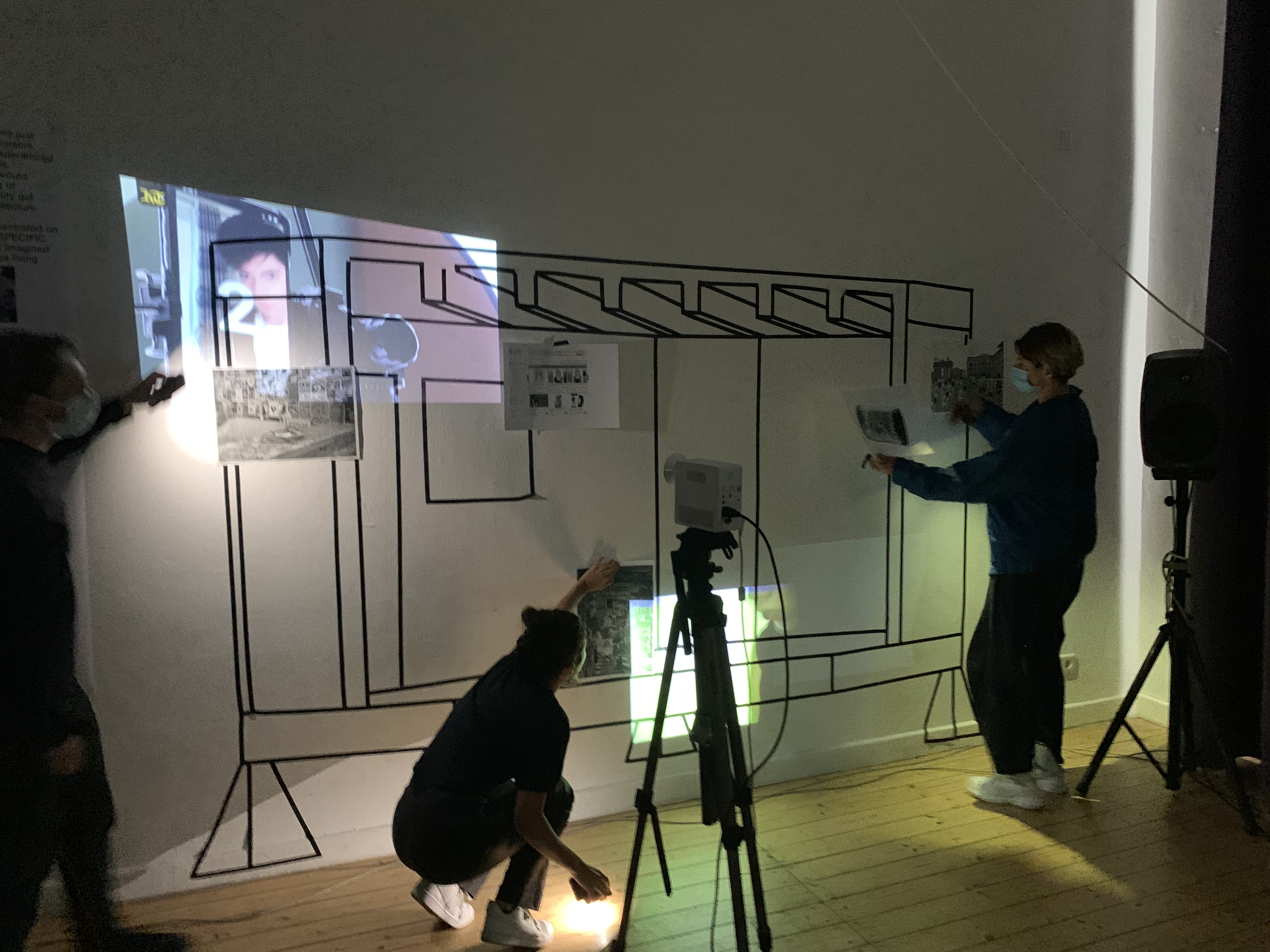
axonometric section of the s-hhs prototype
“communities are formed by individuals with diverse backgrounds and interests. so it is fair to ask how communities would change and adapt a space they are occupying according to their needs and interests. how do different backgrounds influence their way of living? as a group, we concentrated on how specific communities are shaped by their way of living and imagined different communities living in the unit designed by ungers. we analyzed four different communities: digital, religious, punk, and refugee. the diversity of these groups allows us to look at how much a designed module in these circumstances is really needed.”
What are the interrelations between built structures and shared intentions or aims?
Martha Delagrange, Gjiltine Isufi, Aljoscha Lahner, Maria Loriti, Fiachra McCarthy and Laura Renard were interested in the TYPOLOGIES of self-build and community housing. they established a matrix to contextualize ungers’ ideas developed in his s-hhs in a broader framework.
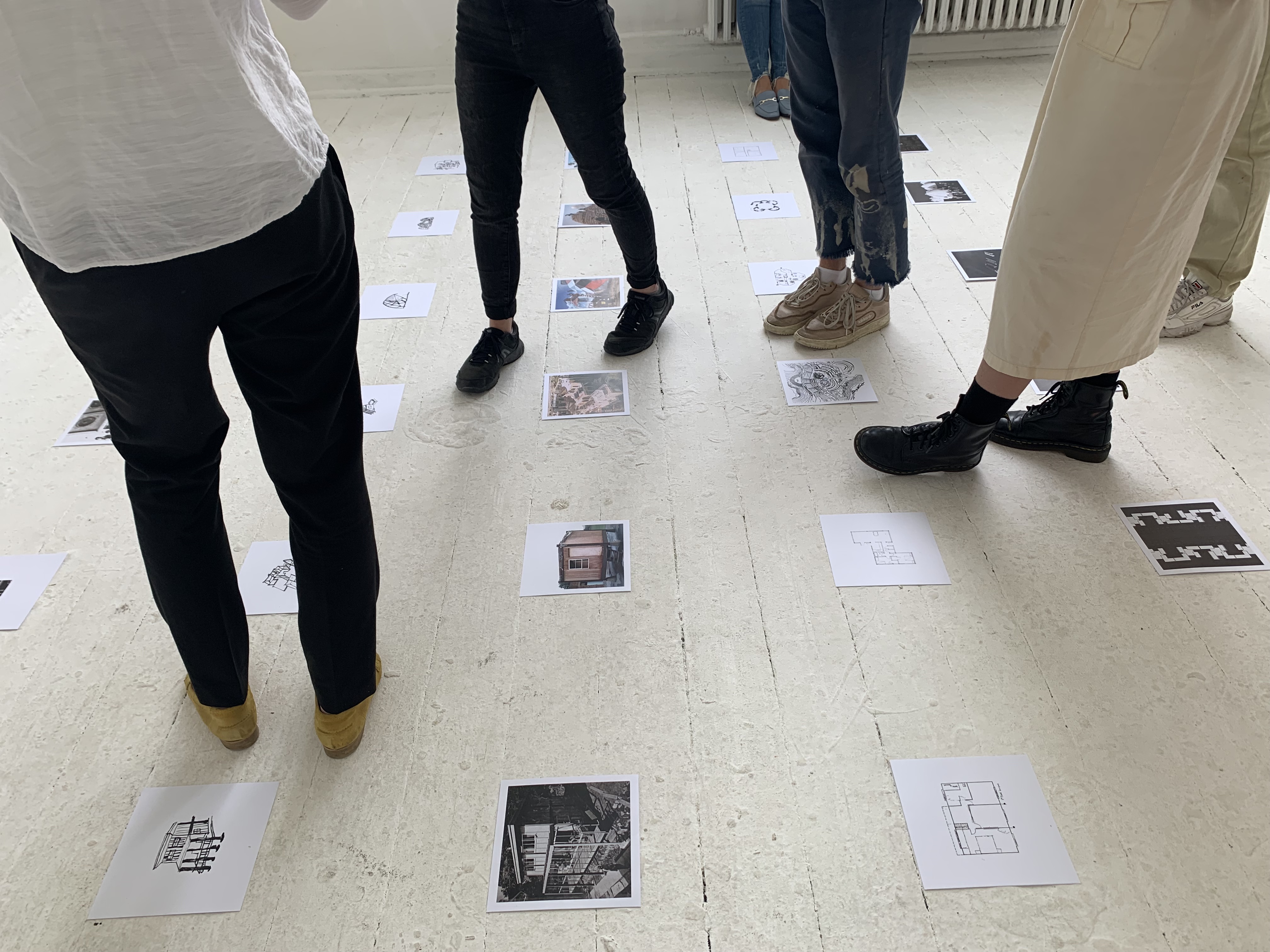
introducing the matrix of self-build projects
“comparing the projects reveals certain correlations. some are built out of a need for affordable housing or for emergency housing, others follow an ideal, such as creating a community, developing a live-in work of art or integrating a self-sustaining community into the eco-system.
in the case of affordable housing, emphasis is often given to the feasibility of building the houses, which are to be made by the inhabitants, to strengthen the community. there are however very few shared spaces and facilities. when the focus is on the creation of a community, there are a lot more communal facilities and forms vary from ready-made buildings to more experimental structures. ungers’ self-help housing system has the potential to work both ways, as it is designed to be easily built and the structures can house different functions and shared facilities.”
Is self-expression possible in a modular housing system?
VINCENT NUYTS, KONSTANTIN TRAUTMANN, DAAN VANBRABANT and TOM VANDORMAEL were attracted to ungers’ morphological work on lines, planes and volumes. in their performative installation, they analyzed how the perceived qualities of these abstract notions can be reenacted, and projected them onto the corridor space of ungers’ self-help housing system. they described their installation as follows:
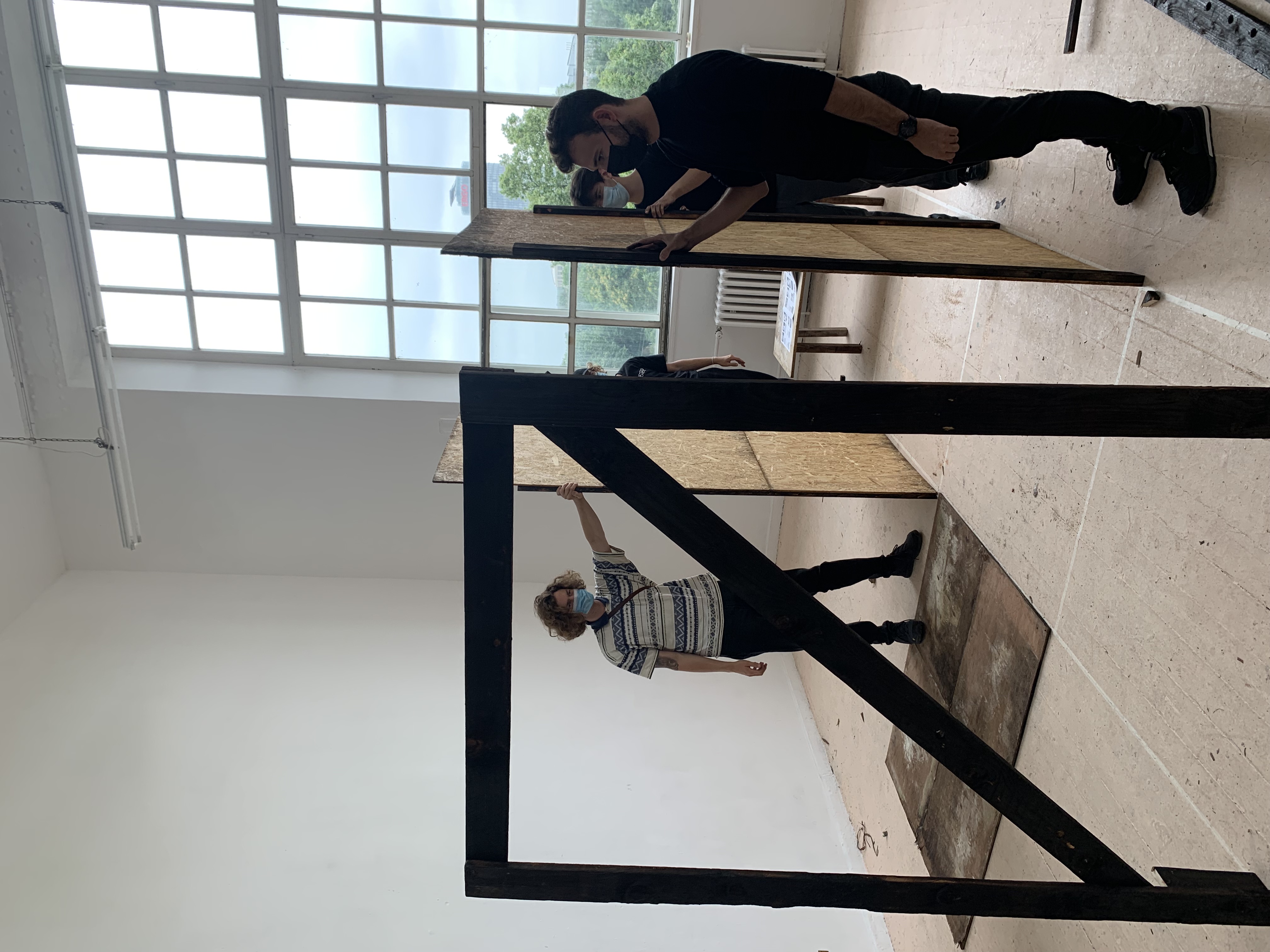
elements of the corridor of the s-hhs prototype
“self-building construction in a defined grid.
communal explorations of space. supplied by re-used constructing materials.
the self-build process is one of the first steps of bonding as a community. in this way, the interaction between the inhabitants of the community shapes the social and cultural connection. starting off with ungers’ main methods and system, communities create their own construction.”



